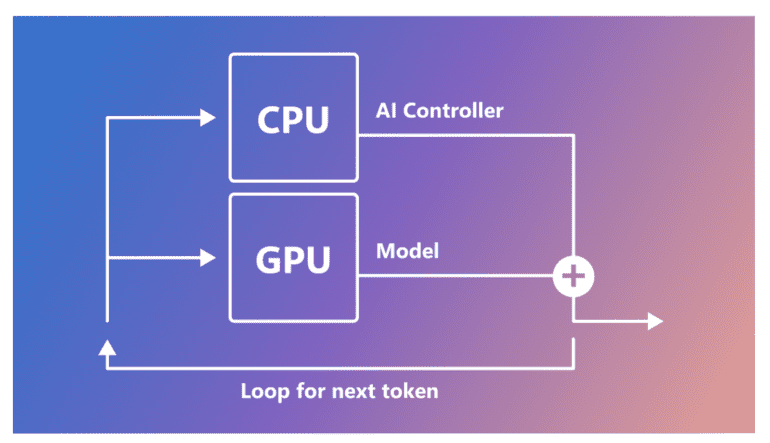- Microsoft’s AI Controller Interface (AICI) revolutionizes cloud-based AI interaction.
- AICI offers granular control over text generation, addressing challenges in content accuracy, format adherence, and data security.
- Implemented as a lightweight virtual machine (VM), AICI enables efficient interaction with Large Language Models (LLMs) while ensuring optimal performance.
- Rust-based AI Controllers within AICI enforce formatting rules and offer flexibility for future enhancements.
- AICI empowers users to dictate information flow, timing, and prompts, streamlining control over LLM processing and data preprocessing.
Main AI News:
The advent of Large Language Models (LLMs) has revolutionized text generation and computational interactions. However, challenges persist regarding content accuracy, format adherence, and data security, particularly in sensitive sectors like healthcare and finance. Conventional methods, such as constrained decoding and agent-based approaches, have limitations, including performance costs and complex integration requirements.
In response to these challenges, Microsoft introduced the AI Controller Interface (AICI), a groundbreaking solution that transcends traditional text-based APIs for cloud tools. AICI operates on a “prompt-as-program” interface, seamlessly integrating user-level code with LLMs to produce outputs in the cloud. It addresses concerns regarding security, application-specific functionalities, and accuracy through customizable strategies, granting users granular control over LLM processing.
AICI leverages a lightweight virtual machine (VM), implemented as a WebAssembly VM, to enable agile and efficient interaction with LLMs. This AI Controller facilitates precise control over text generation, allowing users to specify AI Controller and JSON programs, generate tokens, and assemble responses. The architecture supports parallel execution, optimal memory usage, and multi-stage processing for enhanced performance.
Moreover, the research team at Microsoft has identified various use cases for AICI. Rust-based AI Controllers, for instance, employ efficient methods to enforce formatting rules during text creation, ensuring compliance through trie-based searches and pattern checks. These controllers offer flexibility and are poised to provide even more robust guidance in future iterations. Users can dictate the flow of information, timing, and prompts, streamlining control over multiple LLM calls and preprocessing data for analysis.
Conclusion:
Microsoft’s AI Controller Interface signifies a significant advancement in cloud-based AI interaction, providing businesses with unprecedented control, security, and efficiency in text generation and processing. This innovation has the potential to reshape the market landscape, empowering organizations across various sectors to leverage AI technologies with confidence and precision.

